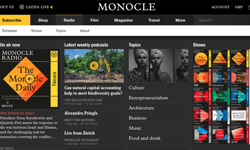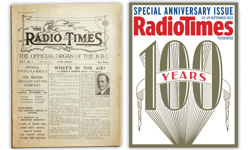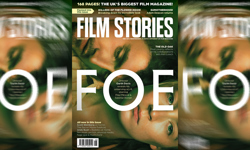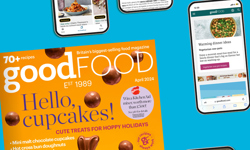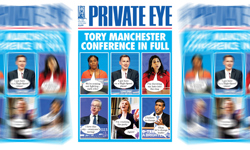It was the women’s magazine that caused a revolution when it was launched as the first weekly glossy nine years ago, offering a quick turnaround combined with upmarket advertisers. But in today’s media landscape, where women can get their fashion and lifestyle fix immediately from a pantheon of websites and blogs, Grazia has had to innovate rapidly to stay ahead of the game.
Grazia has responded to the brave new digital world by making its ‘who, what, wear?’ concept available on a range of platforms, from the graziadaily.co.uk website, to Twitter and Facebook feeds and market-leading apps for tablet and smartphone, as well as the print edition of the magazine.
This strategy has paid off: Grazia was named Best Consumer Digital Brand at the PPA Digital Awards last September, and its mobile apps consistently appear in the top 10 of the ‘Top Grossing’ app chart on Apple Newsstand.
However, despite the title’s much-lauded digital innovation, its print circulation fell 14.4 per cent in the year to December 2013 to just 145,851 actively purchased copies, posing the question of whether Grazia’s multi-platform publishing strategy will prove to be its saviour?
Upmarket but weekly
Launched by Emap in February 2005, under licence from the Italian publisher Mondadori, which has published the title in Italy since 1938, Grazia was the first weekly women’s magazine with the ability to attract advertisers such as Prada, Gucci and Dolce & Gabbana. Since its sale to Bauer Media in December 2007, Grazia has continued to target an upmarket audience of 25 to 45-year-old women with an interest in high fashion and celebrity lifestyle.
Abby Carvosso, Group Managing Director, London Lifestyle, Bauer Media explains: “We view it as the Grazia brand strategy rather than the digital strategy. The reason Grazia is such an influential and successful brand is because of its deep understanding of its audience. We spend a huge amount of time working out the role of the content that we create on each platform and how this fulfils the consumer need. At the heart of the Grazia brand is keeping our consumer in the know. We need to be able to deliver this whenever, wherever, however she wants it.
“The essence of Grazia exists on every platform but the actual proposition will differ. For example, we would break some news on Twitter; have a conversation with our audience about it on Graziadaily and Facebook and then give the in-depth story in print.”
In November 2012, Grazia launched apps for iPad and the BlackBerry Z10, followed by an iPhone app in September 2013, with an Android version currently believed to be in development. When it came to launching these apps, the Grazia team searched for a concept which would make the mobile edition stand out from the print magazine. They joined forces with Kaldor Group, the creator of the Pugpig digital publishing platform. CEO and co-founder Jonny Kaldor reveals: “The original brief was how do you take a magazine brand like Grazia which is highly visual, highly designed, and translate that to mobile devices. How do you create something compelling for readers beyond a PDF page turner?”
The concept they came up with was ‘shop, share, save’, allowing mobile readers to tap on the image of an item of clothing or accessory and buy it straight away, share it with their friends on social networks, or save it to a wish-list.
Template driven
Another important element of the mobile app was creating a set of twelve flexible templates, into which text and images can be easily slotted, allowing Grazia’s team to upload most of the content from the weekly magazine quickly and easily, thereby reducing the art team’s workload and costs, while still leaving some capacity for innovation.
Kaldor admits: “An art director’s initial reaction to being told they are going to use a template is often quite extreme, but most creative directors will tell you that what was initially seen as ‘I’m going to be constrained’ becomes ‘I’ll use templates for 80% of the book which will give me proper time to design bespoke pages.’ This approach doesn’t negate the ability to design one-off pages.”
Jonathan Clayton-Jones, former Art Director at Grazia, who now works for Kaldor, agrees: “The whole thing started off with me tearing my hair out saying ‘this is never going to work’ and eighteen months later joining the business! All you have to do is fill boxes with images or text, but although we have set those boundaries, you can put anything you want in them. There are pros and cons. On digital you could have live fashion shows or a gallery of 100 pictures. If someone’s talking about music, you want to be able to link through and listen to it. You couldn’t have that in a print edition. But in the print edition there is more freedom to be creative with graphic design.”
‘Shop, share, save’ operates under a commercial partnership with fashion search engine Shopstyle. While Grazia will not comment on figures, industry insiders believe it will take some time for the title to recoup the investment in the app and for readers to adapt to shopping in this way. Bespoke apps of this kind can cost between £30,000 and £50,000 to develop, although platforms such as Pugpig can also be bought off-the-shelf and once a publisher has purchased them, they become cheaper for subsequent titles.
For me, the contents page is an example of where the iPad edition of Grazia really shines. The flat, traditional list of features in the print version is brought to life with shifting images, encouraging the reader to browse the magazine in a non-linear fashion. The shop, share, save feature also showcases products to much better advantage than in print. However, some of the gossip articles sit a little uneasily in this medium; I think paparazzi shots still look better on the printed page. Grazia on the iPhone offers instant access wherever you are, but due to space constraints, entire articles are confined to single columns and unless you scroll down carefully, you are sent back to the top of the article before you have finished reading it.
The graziadaily.co.uk website is another important platform for the magazine. Page views are up nearly 82% year-on-year, with visits to the site increasing almost 11% over the same period, thanks to a shift in strategy from purely breaking fashion news to adding gossip and lifestyle content.
Need to experiment
Jason Bennetto, Acting Course Director, MA Magazine Journalism, at City University London, believes titles like Grazia are increasingly influenced by commercial websites such as ASOS and Net-a-Porter. Bennetto explains: “The fear is that there are too many women’s weeklies in the market and there might be a shake up and one or more might go out of business. With that in mind, magazines are now looking for alternative streams of revenue. They are seeing what’s working elsewhere; examples of alternative money spinners rather than just seeking classic advertising or newsstand revenues. They look at Net-a-Porter or ASOS and think that’s a way forward. Magazines realise they are dead in the water if they don’t do something new.”
Bauer Media has just launched a new digital brand for twenty-something women, an edgier little sister for Grazia called The Debrief. Meanwhile Grazia, whose core reader is in her mid-30s has been emailing readers in the 16-34 age group offering the chance to win cash prizes in return for help with its research into how younger people use media.
In May 2013, Grazia Editor-in-Chief Jane Bruton told the PPA conference: “You can’t read an iPad in the bath;” insisting there will always be a place for the printed glossy magazine. Carvosso agrees: “There will always be a place for print products as no other platform gives that unique indulgent experience, however it is critical that we give our consumers a Grazia experience wherever they want it, that’s what makes Grazia so successful.”
“Everyone wants people to say print is dead,” adds Clayton-Jones: “I used to think that, but I don’t think that’s going to be the case for a very long time. Some people still like to read a print magazine and other people are obsessed with digital devices. These days, people expect to get media in different ways. Eventually everyone will be consuming on phones rather than tablets.”
Kaldor sees the perception of the printed product shifting: “For me, consuming content through printed media will always happen but it will be something like vinyl. There will always be beautiful, nice products that will adorn peoples’ coffee tables.” He adds that Grazia is still ‘somewhat unique’ in the magazine market in having its own custom-built app: “I genuinely believe that London and the UK are really blazing a trail. We are having the same conversations in New York that we were having in the UK two or three years’ ago. This whole idea of taking structured content and putting it across a range of devices, London gets it. They are all moving away from this pixel perfect page design to responsive design. In New York they are just starting to intellectualise it, they are not doing it. London is the place to be in publishing at the moment.”
Grazia is doing all the right things to position itself as a desirable brand in the digital age. However, it remains to be seen whether Bauer can turn the critical acclaim it has received for its forward-looking publishing strategy into financial success.




